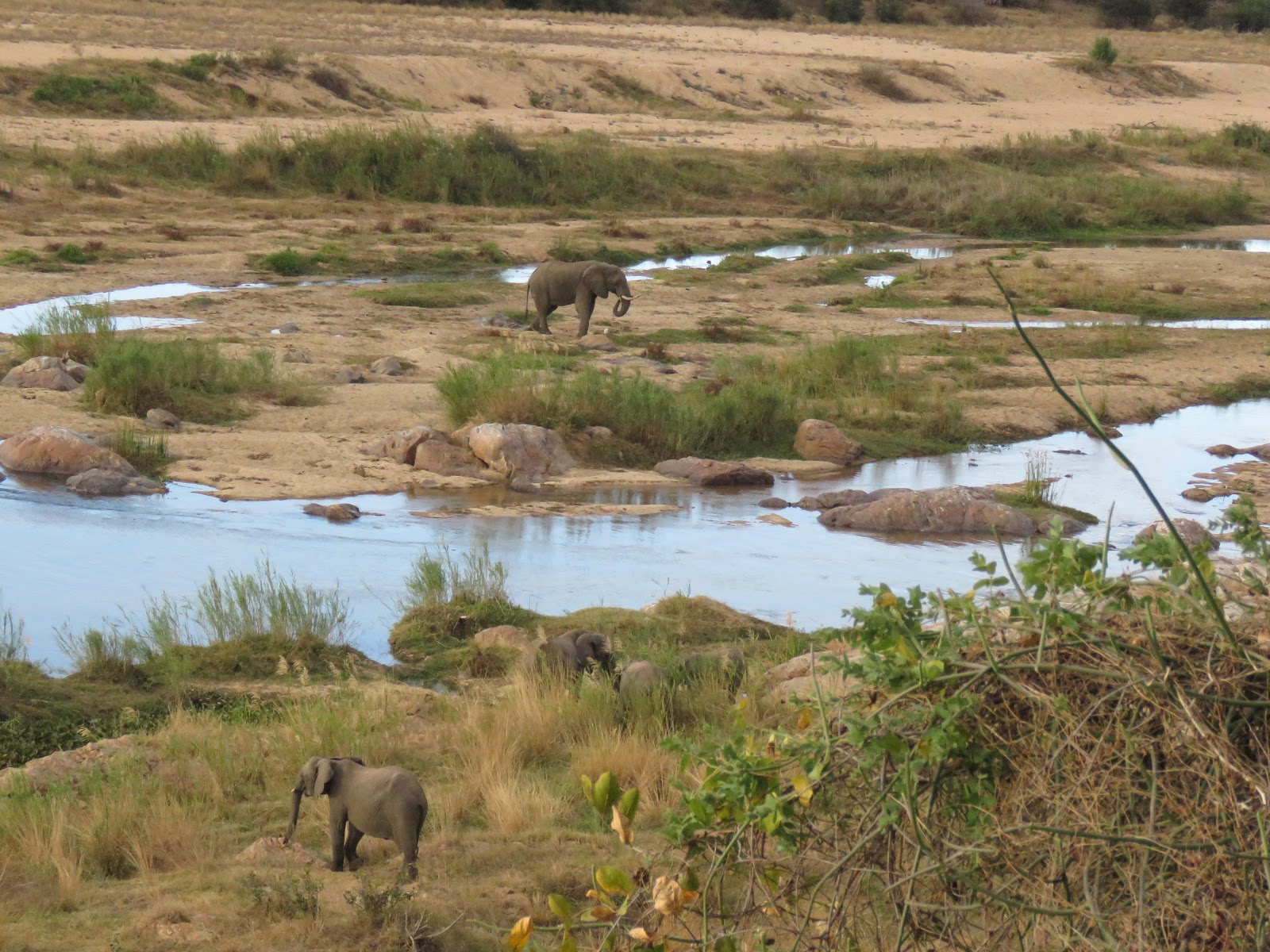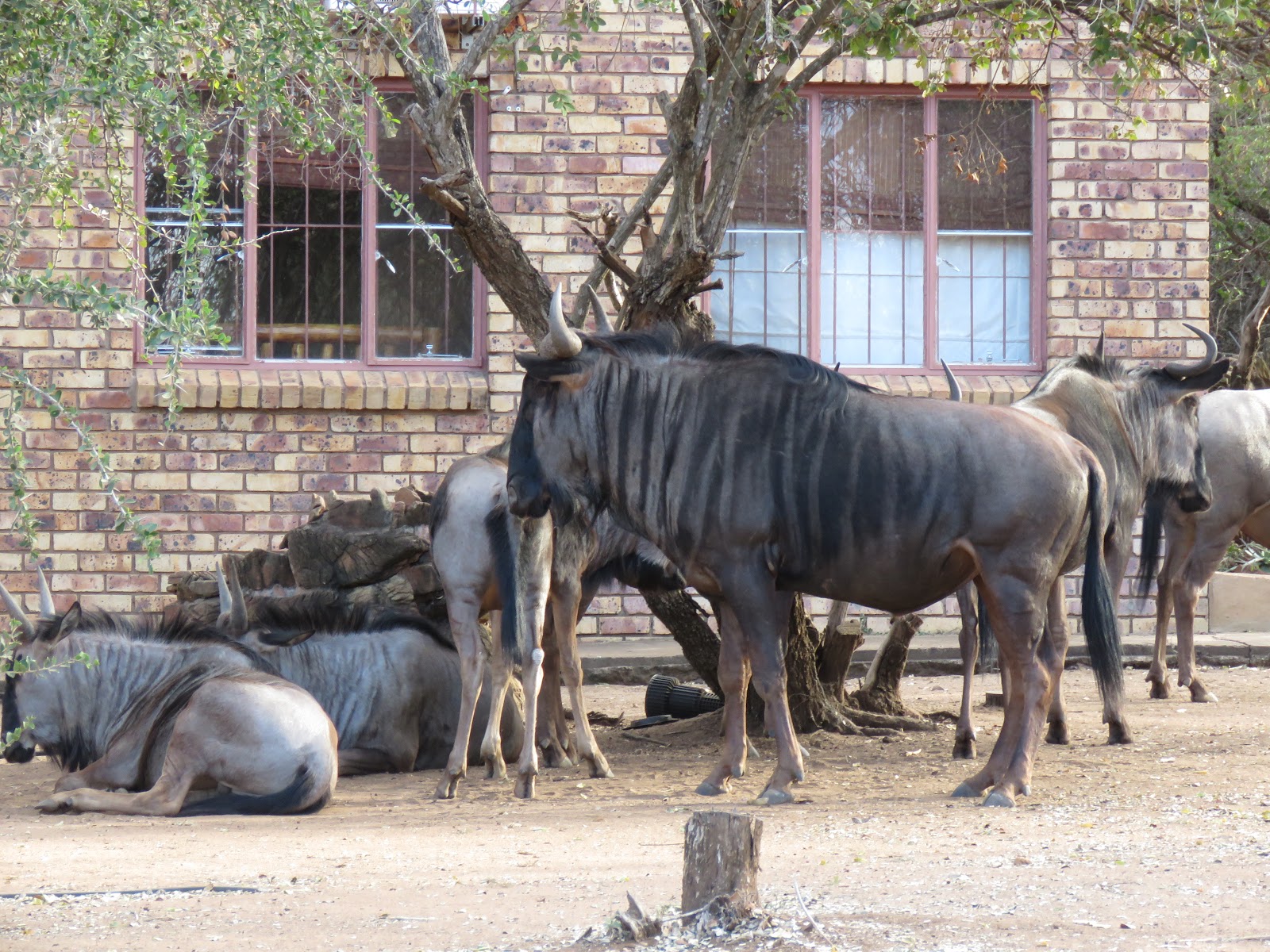 |
| A Great White Heron was standing in the water at Sunset Dam in Kruger National Park. |
“Sighting of the Day in the Bush”
 |
| This is our friend Tusker. He is the sweetest guy who comes to visit several times each day, particularly after 1600 hours (4:00 pm). He’s so comfortable here he often lies down for a short nap. |
While midway through making one of our favorite low-carb meals, and before I started working on today’s post, the power went out at 0945 hours (9:45 am). We weren’t too concerned when most often, it comes back on within a few hours.
Tom read a “paper” book we borrowed from friends Lynne and Mick about the history of Marloth Park while I’m typed the text on the offline app for our site on my phone, which I often use during power outages.
 |
| We never get tired of seeing these wondrous animals, both in Kruger and in Marloth Parks. |
Power outages are common in Africa, as are other areas of the infrastructure. For example, we had a package shipped from the US on May 28th, almost two months. Due to a strike, it’s been stuck in Pretoria since June 6th.
 |
| Zebras were crossing the road in Kruger. |
We check package tracking and often call to no avail. Yesterday, I was told the “network was down” and to call back again. I called again, and there was no answer.
But, as everyone always says…this is Africa, and we can’t expect such services to be comparable to that in the US and other more developed countries in the world.
 |
| A bloat of hippos at Sunset Dam. |
 |
| From this site: “Hippos can stay underwater for up to 5 minutes without coming up for air, according to National Geographic. When they sleep in the water, their bodies automatically bob up to the top of the water so that they can take a breath, and then they sink back to the bottom. Hippos’ eyes and nostrils are on top of their head. This allows them to breathe and look around while the rest of their body is submerged. “ |
We’d grocery shopped yesterday, and the extra freezer is full of meats and other items. The refrigerator is all fully stocked. If the power didn’t come back on, we’d be out a lot of money.
OK, folks, here’s a new one for you…This is a “bask” of crocodiles! |
I finished making most of the meal and quickly opened and closed the refrigerator door putting everything perishable inside. We decided the best course of action was to embark on one of our usual drives through Marloth Park, hoping the power would come back on while we were gone.
 |
| Another “bask” of crocs at Sunset Dam. |
No doubt, we’ll have another good night in our blissful surroundings, grateful for even the little things; a good home-cooked meal, lots of visitors to the garden, and of course, having power back on.
 |
| Three giraffes at a distance in Kruger National Park. |
Tonight, clear skies providing, we’ll be able to see the entire total eclipse of the “blood moon,” which is only fully viewable in certain parts of the world, South Africa included. It should be a good night!
 |
| As winter continues, there’s less and less green vegetation for the wildlife in Kruger and Marloth Park. |
Hopefully, wherever you may be, tonight, you’ll get a glimpse of this special moon!
Photo from one year ago today, July 27, 2017:
 |
| Too distant for close-up photos, we spotted these two Cormorants sitting on a rock in a pond at the Henderson (Nevada) Bird Viewing Preserve. For more photos, please click here. |






























































































































